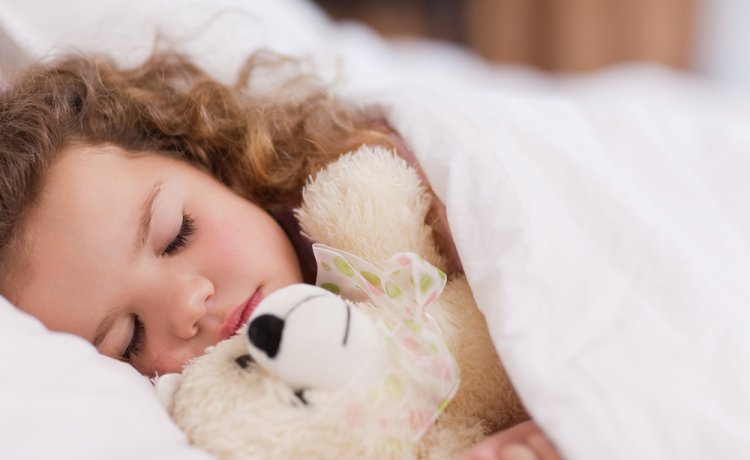
WHAT IS A FEBRILE SEIZURE IN A CHILD ?
If a child suddenly loses conscious (unaware of any sense feeling, irresponsive to any stimuli) and starts to spasm or become motionless, with eyes rolling or clenching teeth or jaw or urinary incontinence,…this is a convulsion, an electrical activity of brain (1,2).
If the seizure is with a temperature of 38°C or higher, it is called a febril seizure (1,2).
THERE ARE TWO KINDS OF FEBRILE SEIZURES: SIMPLE OR COMPLEX (2)
Simple (all of the following)
1. Duration of less than 15 minutes
2. Generalized (all parts of body)
3. No previous neurologic problems
4. Occur once in 24 hours
Complex (any of the following)
5. Duration of more than 15 minutes
6. Focal (a part of body)
7. Recurs within 24 hours
FOR PARENTS: Simple febrile seizures do not have an increased risk of mortality even though they are concerning to the parents (2).
FOR PARENTS: Parents should be reassured after a simple febrile seizure that there is no negative impact on intellect or behavior, and no increased risk of death (1).
AGE OF FEBRIL SEIZURES
Febrile seizures are common in the first five years of life (1). Febrile seizures are the most common seizure disorder in childhood (2) occurring in 2 to 5 percent of children 6 mo to 5 years of age (1).
WHY DOES FEBRILE SEIZURE OCCUR ?
The underlying pathophysiology is unknown, but genetic predisposition clearly contributes to the occurrence of this disorder (3).
DOES FEBRILE SEIZURE RECUR ?
Risk Factors for Recurrence of Febrile Seizures (2)
1. Age <1 yr
2. Duration of fever <24 hr
3. Fever 38-39°C
4. Family history of febrile seizures
5. Family history of epilepsy
6. Complex febrile seizure
7. Male gender
FOR PARENTS: After an initial febrile seizure, physicians should reassure parents about the low risk of long-term effects, including neurologic sequelae, epilepsy, and death (1).
FOR PARENTS: However, there is a 15 to 70 percent risk of recurrence in the first two years after an initial febrile seizure. This risk is increased in patients younger than 18 months and those with a lower fever, short duration of fever before seizure onset, or a family history of febrile seizures (1).
DOES FEBRILE SEIZURE LEAD EPILEPSY ?
Risk Factors for Occurrence of Subsequent Epilepsy (2)
➢ Neurodevelopmental abnormalities
➢ Focal complex febrile seizure
➢ Family history of epilepsy
➢ Fever <1 hr before febrile seizure
➢ Complex febrile seizure, any type
➢ Recurrent febrile seizures
WHAT IS THE FIRST INTERVENTION FOR A CHILD EXPERIENCING FEBRIL SEIZURE
If a child has a febrile seizure, first everybody must stay calm. Seek immediate medical attention, the nearest medical center may be the best option for the first medical intervention. But before that, at that time, you can be the only person stand by and take first aid measures, and carefully observe the child. A seizure can be terrifying to watch, especially if you've never seen one before. It may cause the child's entire body to shake violently and the child loses consciousness.
Make sure the child is on a safe surface, such as the floor, ground and can not fall down or hit something hard; this is to prevent accidental injury. Lay the child on one side to prevent choking with saliva, stomach secretions coming out of the mouth. Watch child’s breathing.
It's also important to know WHAT YOU SHOULD NOT DO during a febrile seizure:
➢ Do not try to hold or restrain the child.
➢ Do not try to put anything in the child's mouth.
➢ Do not try to put the child into water to cool off (6,7).
INITIAL EVALUATION IN FEBRIL SEIZURE
Initial evaluation should determine type of seizure and identify the source of fever (4,5).
Routine laboratory tests, electroencephalography, and neuroimaging are not recommended in patients with simple febrile seizures (1) but the laboratory studies and treatments must be decided by the doctor because they change by the patient’s condition. The best aproach can be determined by doctor’s decision.
PREVENTING FEBRIL SEIZURE:
Use of antipyretic agents during febrile illnesses (6).
Use of long-term continuous or intermittent antiepileptic medication after a first simple febrile seizure must be considered by a specialist doctor as a comparison of effectivenes at reducing reccurrence with potential adverse effects (1,6).
The information contained in this site is provided for informational purposes only and is not intended to replace the advice of any doctor or health care provider. I encourage you to discuss with your doctor any questions or concerns you may have.
Last Updated 25th August 2017
BIBLIOGRAPHY:
1. http://www.aafp.org/afp/2012/0115/p149.html
2. Nelson Textbook of Pediatrics, 20th Edition, Kliegman, Stanton, St. Geme, Schor & Behrman, Philadelphia 2016 by Elsevier.
3. Winawer M, Hesdorffer D. Turning on the heat: the search for febrile seizure genes. Neurology. 2004 Nov 23. 63(10):1770-1. [Medline]
4. Subcommittee on Febrile Seizures; American Academy of Pediatrics. Neurodiagnostic evaluation of the child with a simple febrile seizure. Pediatrics. 2011;127(2):389–394.
5. Millar JS. Evaluation and treatment of the child with febrile seizure. Am Fam Physician. 2006;73(10):1761–1764.
6. http://www.cnd.org.tr/index.php?cat=26
7. http://kidshealth.org/en/parents/febrile.html#
